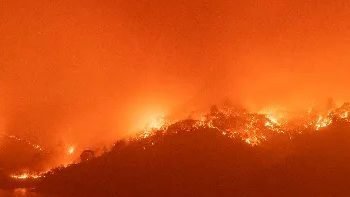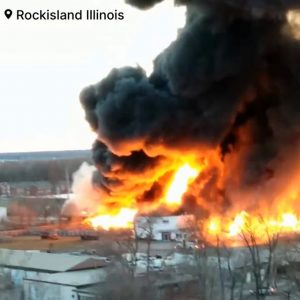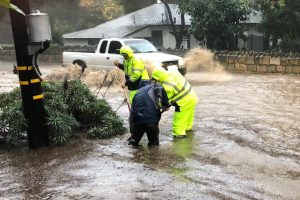More than
20,000 firefighters from across the United States on Friday battled sprawling
deadly wildfires up and down the West Coast as the arrival of cooler weather
offered hope of a respite.
The true
scale of the destruction from dozens of massive blazes in California, Oregon
and Washington states remained hard to gauge, with 16 deaths confirmed so far
this week, but wide stretches still cut off by flames.
“We
anticipate that number (of deaths) may potentially go up as we get back into
areas that have been ravaged by flame and obviously, smoke begins to
clear,” warned California governor Gavin Newsom, as he visited a scorched
forest near the raging North Complex Fire.
Ten people
have been confirmed dead from that blaze in Butte County, which was driven at unprecedented
pace toward the city of Oroville earlier in the week by strong, dry winds and
soaring temperatures.
But Newsom
said the weather “is beginning to cooperate,” with winds settling
down and some rain forecast in the coming days.
In
neighboring Oregon, where one million acres have burned and three people are
reported dead with dozens still unaccounted for, governor Kate Brown also
expressed hope a corner had been turned.
More than
40,000 Oregonians have fled their homes so far, with some 500,000 under
evacuation warnings, Brown told a press conference — clarifying previous
higher figures given by state officials.
“The
weather system fueling these fires over the past few days has finally broken
down,” she said.
“We
anticipate cooler air and moisture coming in the next few days, which is really
good news.”
Dozens of
people remained missing in connection with the fires, specifically in Jackson,
Lane and Marion counties, Brown said.
Earlier in
the week, Brown warned that Oregon could expect to see a “great deal of
loss, both in structures and in human lives.”
The August
Complex Fire this week became by far the biggest recorded blaze in Californian
history, ripping through 746,000 acres (300,000 hectares) of dry vegetation in
the state’s north, as multiple fires combined.
In Pics: California wakes up to red sky
But it is
just one of around 100 large fires on the US West Coast, and other rapidly
growing blazes closer to populated areas have proven deadlier.
“We are
at a complete loss for words right now,” Bobbie Zedaker told the San
Francisco Chronicle, after DNA tests proved her missing 16-year-old nephew was
among those killed by the North Complex Fire.
Two more
people were killed near the rural community of Happy Camp, a Cal Fire
spokeswoman told AFP Friday.
But in a
mountainous region of central California, close to where the Creek Fire is
burning, some members of an indigenous community refused to leave their homes
despite evacuation orders.
“I
don’t feel it’s going to come this way,” said James Hancock, 52, whose
home on the Cold Springs Rancheria Indian Reservation currently has no light,
electricity or water.
“The
ancestors didn’t have any of that and they were fine,” he told AFP.
Huge
wildfires are becoming more common, with the World Meteorological Organization
saying the five years to 2019 was unprecedented for fires, especially in Europe
and North America.
Climate
change amplifies droughts which dry out regions, creating ideal conditions for
wildfires to spread out of control and inflict unprecedented material and
environmental damage.
Also read: California fire burns 2 million acres, smoke hampers rescue operation
“I’m a
little bit exhausted that we have to continue to debate this issue,” said
Newsom on Friday. “This is a climate damn emergency. This is real, and
it’s happening.
“This
is the perfect storm.”
California
has already seen more than 3.1 million acres burn this year — an annual
record, approximately the size of Connecticut — with nearly four months of
fire season still to come.
The state’s
12 wildfire deaths this week follow eight more last month.
Oregon
officials have confirmed two deaths in the Santiam Canyon region south of
Portland, and a third near the California border.
In Washington state, a one-year-old boy perished
while his parents suffered severe burns as they attempted to flee an inferno
130 miles (210 kilometers) east of Seattle.







